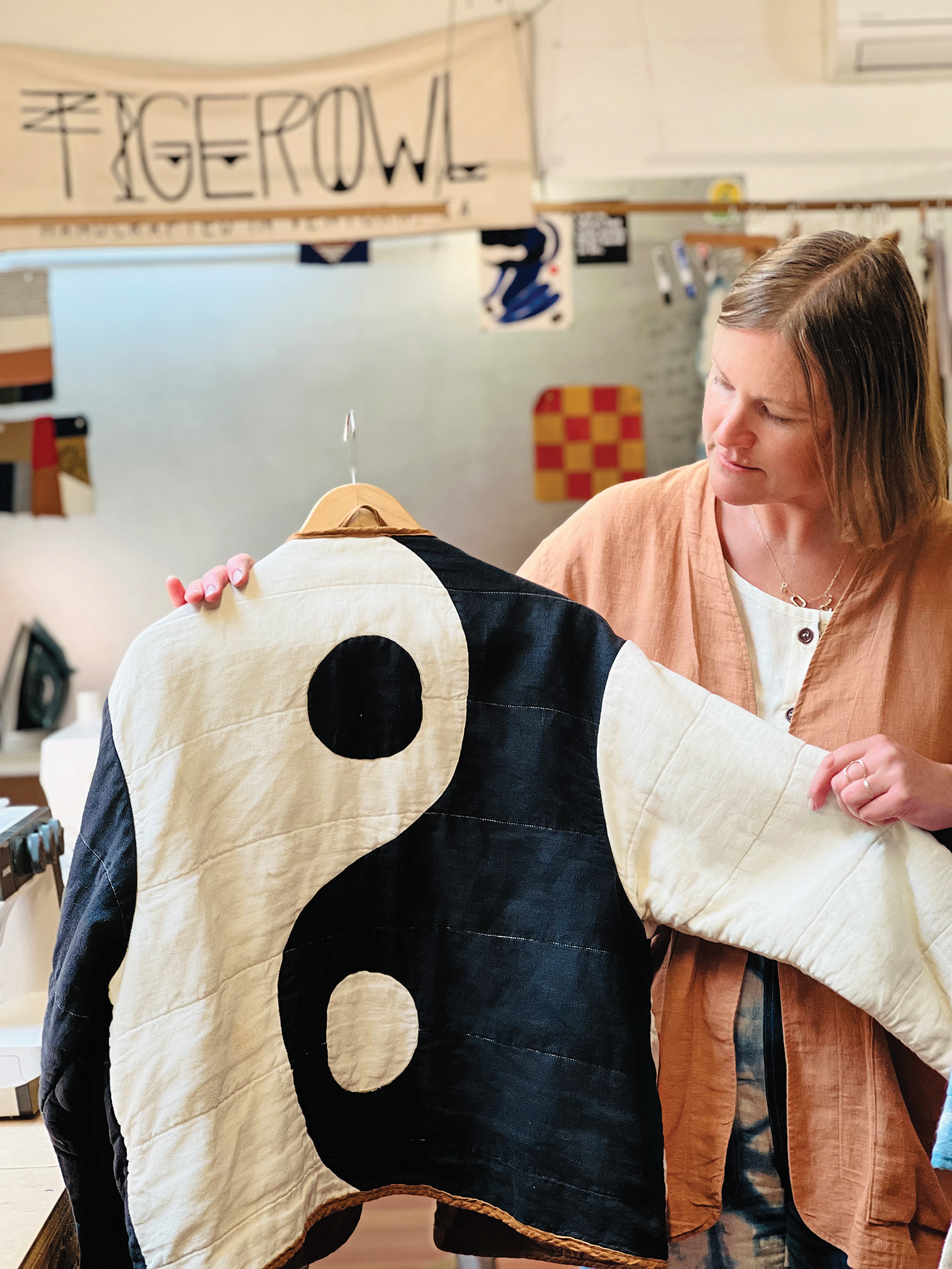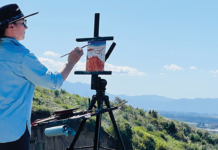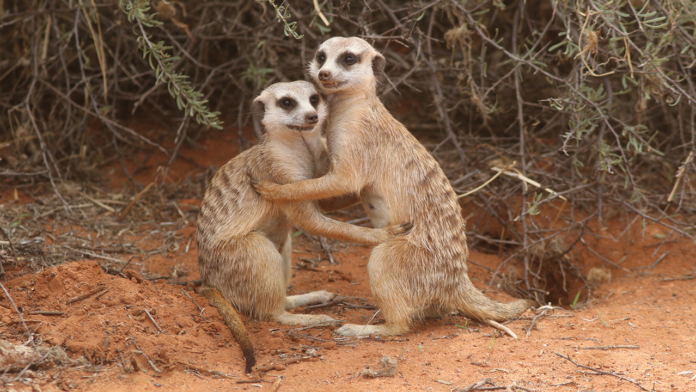Story and photos by Chuck Graham
Our 4×4 vehicle was taking a pounding on the gritty washboard-riddled road toward the Kalahari Desert in northeastern Namibia. It felt like our teeth were rattling inside our heads. My marine biologist girlfriend, Holly Lohuis, and I looked at each other and laughed. We wouldn’t have expected anything less in this remote region of Southern Africa.
One of the many wildlife species we wanted to see while on our overland excursion were meerkats scampering across the brilliant red earth of the Kalahari. Fortunately, the route leading to one of their many territories got a lot easier once we converged with the softer sandy roads within the Bagatelle Kalahari Game Ranch. The ranch was a known hotspot for seeing a large group of meerkats.
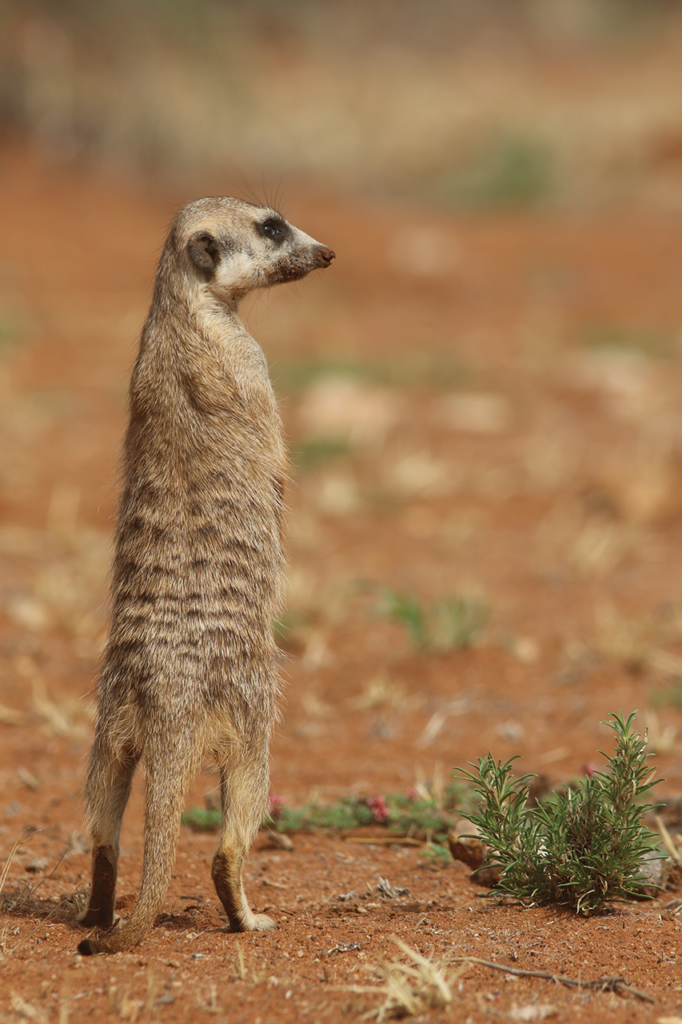
Worth the Wait
This was my 16th trip to Africa and Lohuis’s second. It was my third trip to Namibia. The arid landscapes, Indigenous people, culture and wildlife are astounding and continue to draw me back. After traveling to 13 countries within the continent, I had never encountered meerkats before. So, to say I was slightly anxious to see them would be a gross understatement. In my mind, I continuously envisioned episodes of the popular Animal Planet series, “Meerkat Manor.”
Meerkats maintain a roughly 1.8 square kilometer territory. Their territories appear barren, lifeless and with little flora. Shade was a luxury in the Kalahari Desert. At the Bagatelle Kalahari Game Ranch, which was smack dab in the middle of this band of meerkats’ turf, Lohuis and I felt it was just a matter of time.
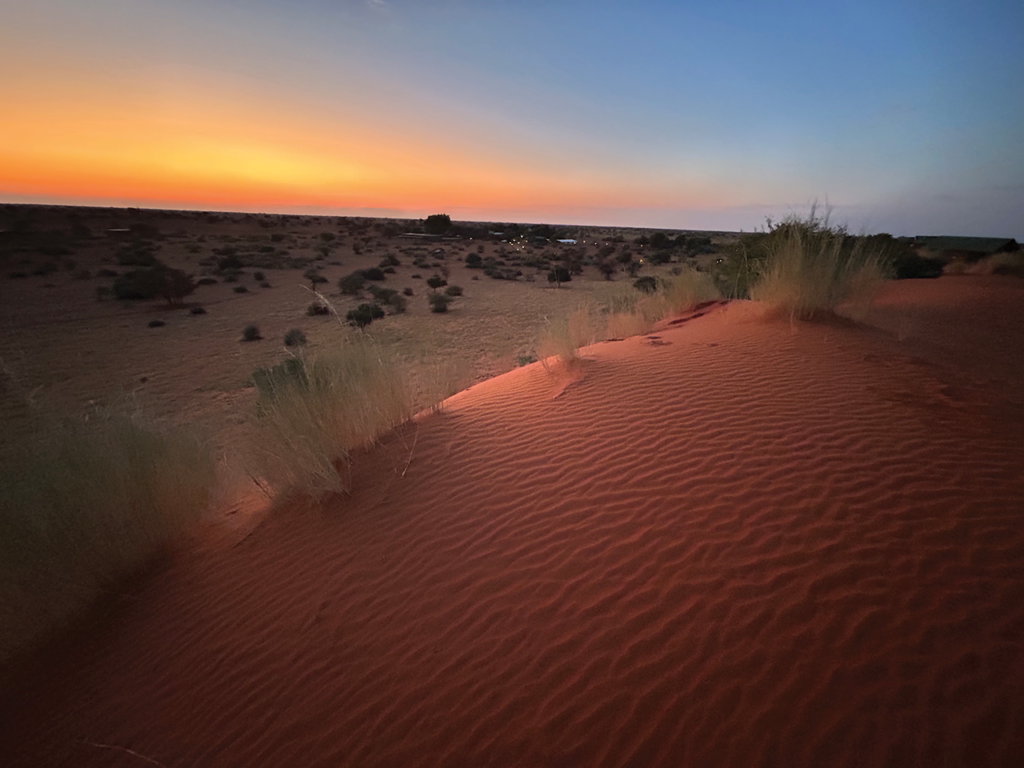
Still, I was restless, and more than anything else we were in Namibia, which means “the land of endless openness.” It’s also the third least densely populated country in the world. So, I left on a predawn hike, wandering the rolling sand dunes, not a soul in sight.
There were close contacts with small herds of antelope, including skittish springbok, elegant greater kudu and Namibia’s national animal, the gemsbok. I accidentally flushed a busy flock of helmeted guinea fowl from their acacia hideaway, their beautiful, speckled feathers fluttering over the dunes. Their detailed spoor was the only blemish on the wind-groomed dunes. I also got my first look at a yellow mongoose, a blur of mustard-colored fur blending into the sand slopes.
That was until two young San bushmen emerged from the acacia scrub. Stealthy as they come, it’s something they’ve done with ease in the desert for thousands of years. They smiled at me, and then just melded into the desert, vanishing in that stunning red loam.
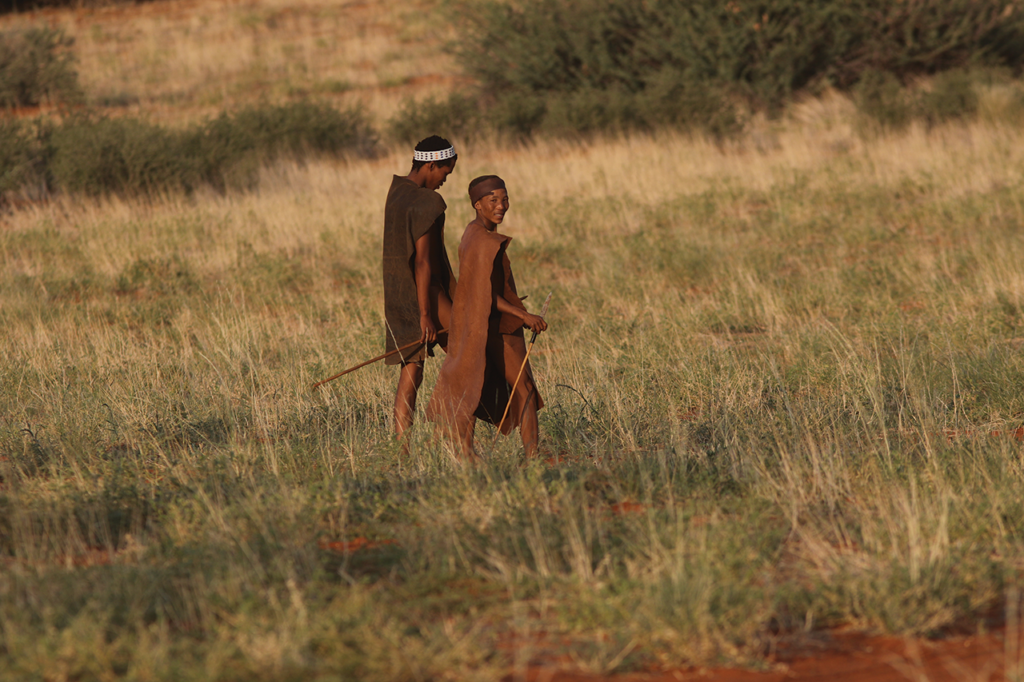
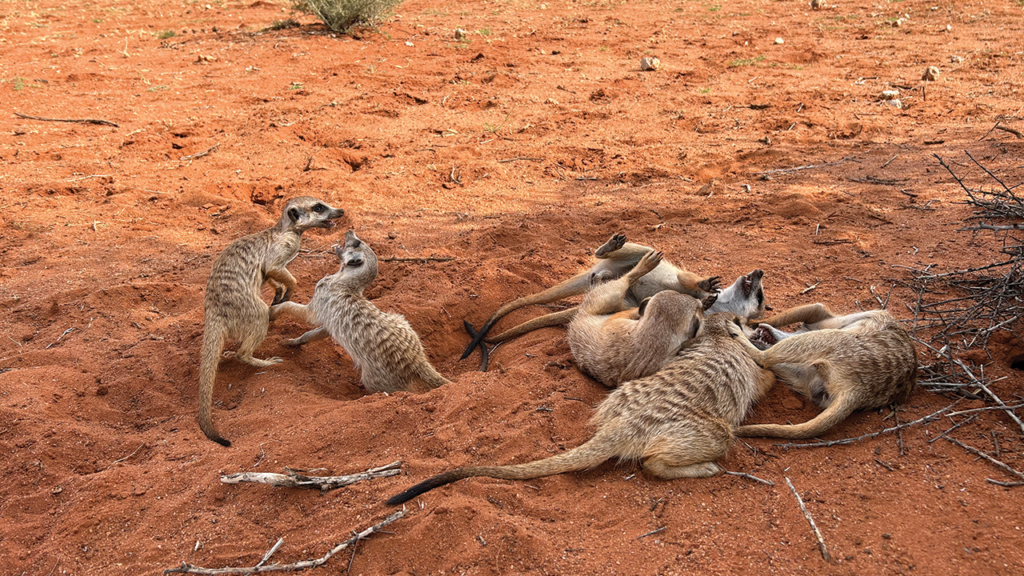
Meerkat Mania
After returning from my morning ramble, Lohuis and I ate breakfast with no set plan for the rest of the day. Still, camera gear and binoculars were always at the ready, appendages for those of us with an eye for meerkats, as well as other species that have evolved in the harsh, dry desert climes. From sunrise until dusk, we hoped they would move through their territory honeycombed with deep, subterranean burrows and tunnels. Finally, on the morning of our third day in Namibia, it was meerkat mania as 20 of them arrived just after breakfast.
There was no telling how much time we had with these busy, voracious creatures (also called suricates, a type of small mongoose) before they decided to move onto another region of their desert biome. Fortunately, they were so consumed by foraging for food that they didn’t give a bleep about us and how close we got to them.
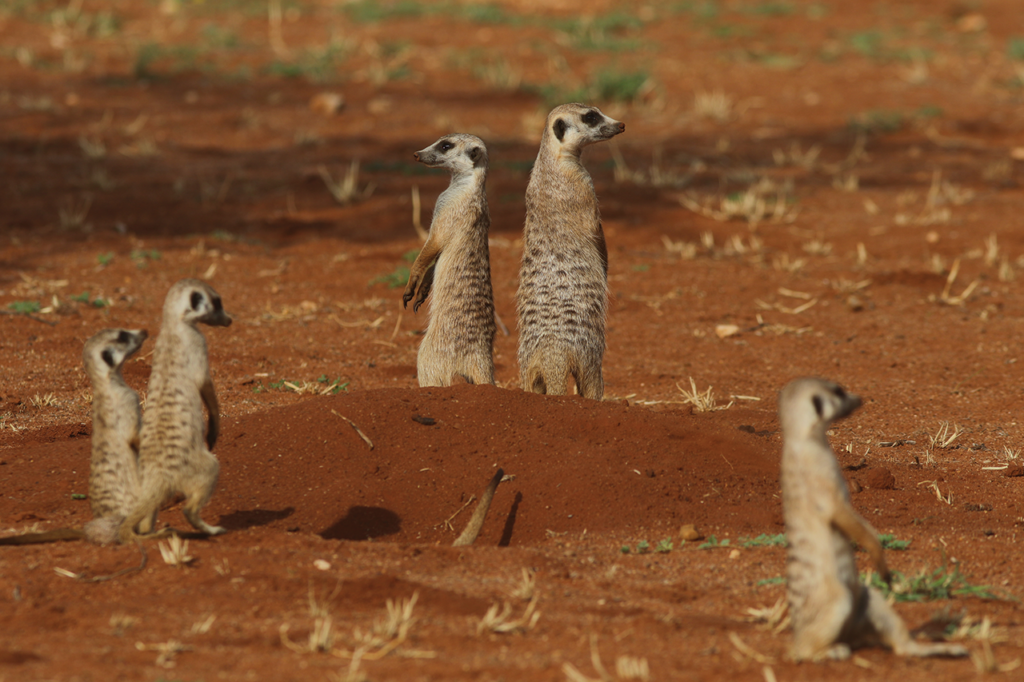
In fact, on one occasion, I was just a few feet away from a meerkat furiously digging into the red earth. Sand was flying onto me and my camera. I thought it was excavating another den, as they keep many throughout their territory. This was about food, though. As dirt flew out beneath the determined meerkat, it momentarily vanished only to reemerge within seconds with a crunchy black beetle.
Amidst all the foraging, there was also lots of grooming. All the meerkats lend a hand in the process. Some of this was done right at our feet, as they milled around us. However, as soon as grooming finished, the meerkat mob was back at it, foraging in the fine earthy sands of the magnificent Kalahari.
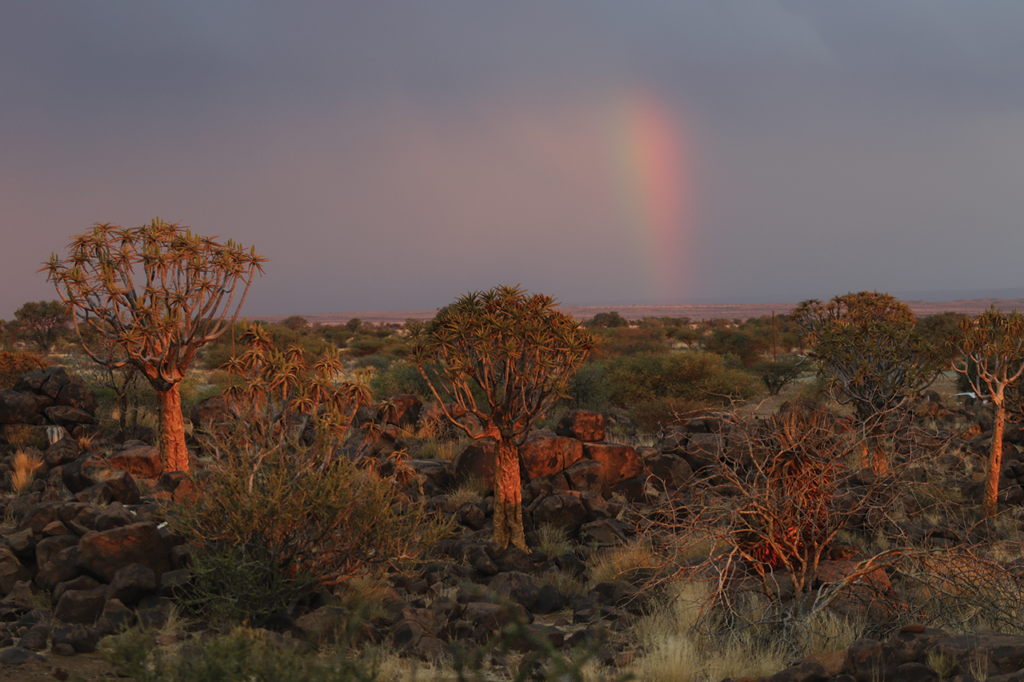
Teamwork
As they foraged, several meerkats stood watch like little centurions scouring the desertscape. Standing tall, meerkats have crazy eyesight, and their peripheral vision goes unmatched. The black rings around their eyes act as protection against the piercing desert sun. There’s safety in numbers as eagles, jackals, African painted dogs and snakes are their biggest threats.
Once a potential threat had been detected, a series of chirps and shrieks warned the mob of possible trouble. Their tails went up like spindly radars as the adults grouped around a den, and their young were sent below first. Several meerkats gazed skyward, keeping a keen eye out for the many species of raptors in Southern Africa.
After the threat waned and the mob regrouped, foraging continued. The band of 20 meerkats would seemingly spread out and disperse, with just a few remaining. However, a chirp here, a shriek there, and much like a wispy desert wind blowing across the Kalahari, all 20 members reappeared and were accounted for.
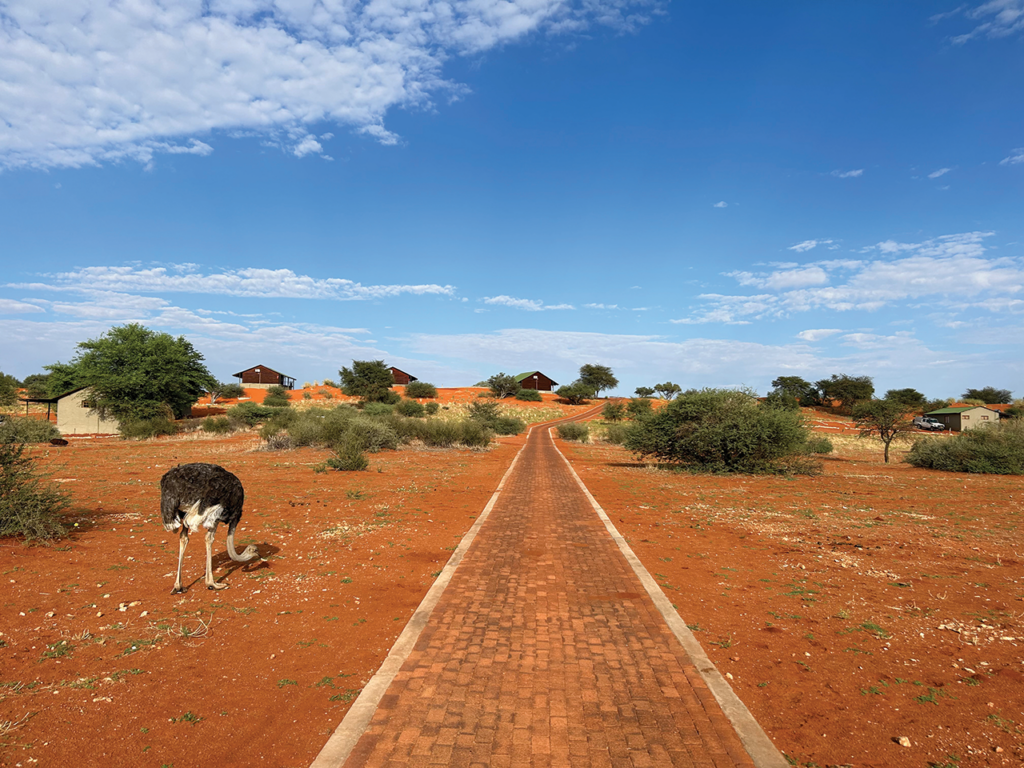
Down Time
These were some of the best, most tender moments with these members of the weasel family. Foraging in that dry desert heat can cause meerkats to overheat a little bit, so they sought out shady spots to rest and relax.
Lazing the day away involved meerkats piling up on top of each other. There were also lots of hugs to go around, the group dynamic playing a large part in meerkat survival. Even more so was the roughhousing that ensued once those pileups became boring.
Within those three hours we soaked in all we could of meerkat behavior, but it flew by quickly. Before we knew it, all 20 meerkats were gone, moving to another area of their vast desert realm.
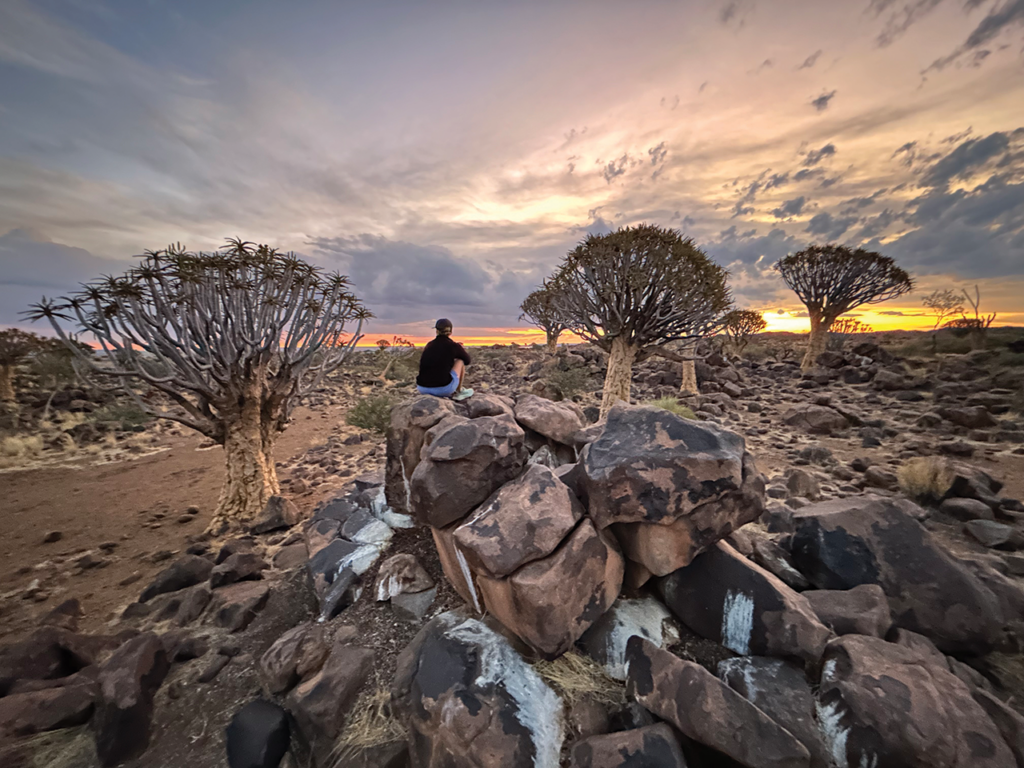
Epilogue
After Lohuis and I left that corner of the Kalahari, we traveled south to the otherworldly Quiver Tree Forest. On our first evening in the forest, dark clouds rolled in at sunset, creating a mythical-like scene as a stunning rainbow pierced the darkening arid landscape and those giant aloes.
Early the next morning the skies had cleared when we saw a small band of meerkats moving quickly through the forest. They appeared super alert, not slowing down for anything. We couldn’t keep track of them in an endless boulder field beyond the quiver trees.
It was the last time we had a glimpse of any meerkats on that 30-day overland trip across Namibia. African wildlife is on its own schedule, and sightings of unique desert fauna are so fleeting. Nine months after that stunning Namibian sojourn, I still find tiny red granules of Kalahari sand in the deepest corners of my Atlas Camera Pack. Thank you, meerkats.
Bagatelle Kalahari Game Ranch
bagatelle-lodge.com


















